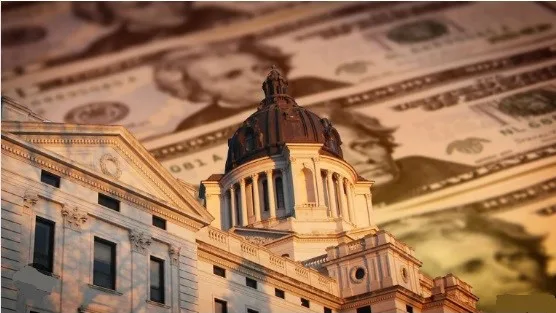PIERRE, S.D. (SDBA) — South Dakota’s financial outlook remains strong through 2026.
According to new state data, steady economic growth is projected in key areas like consumer spending and investment earnings.
However, in her proposed FY 2026 budget she presented to legislators in December, then Gov. Kristi Noem recommended over $100 million in targeted spending reductions across state government to address a $240 million revenue decline.
The legislature’s Joint Appropriations Committee members heard revenue projections today (Wednesday) from Derek Johnson, the state economist with the Bureau of Finance and Management, and Jeff Mehlhaff, deputy director and fiscal chief for the Legislative Research Council.
The BFM’s revenue report shows the state expects total revenue to reach $2.686 billion in fiscal year 2025, driven by ongoing economic expansion and consistent consumer spending. State officials forecast FY 2026 revenue at $2.446 billion.
State officials say this is primarily attributed to the expiration of one-time receipts rather than underlying economic issues.
Officials say South Dakota’s economy continues to show remarkable resilience and growth potential and points to a favorable outlook driven by strong consumer activity and strategic policy decisions.
Sales and use tax, South Dakota’s primary revenue source, is projected to bring in $1.433 billion in 2025. The BFM report also highlighted surprisingly robust investment earnings, with a projected 96% increase in fiscal year 2025.
Appropriations members heard that two key policy changes will impact South Dakota’s finances in the coming years: repealing a tax collection credit, which adds an estimated $6.8 million to state funds in 2026, and reducing the Tobacco Prevention Trust Fund allocation from $5 million to $2 million annually.
For 2026, the state projects $2.446 billion in total revenue, primarily due to expiring one-time receipts rather than underlying economic issues. Core revenue sources show resilience despite workforce and infrastructure challenges.
State forecasters anticipate two Federal Reserve interest rate cuts in 2025, which could lead to increased consumer spending. Inflation is projected at 2.9% in 2025 and 3.3% in 2026.
The report’s findings will inform ongoing policy discussions and budget decisions. Tomorrow (Thursday) is the last day for the Joint Appropriations Committee to select the basis for general revenue targets as they work on the general appropriations bill. The legislature typically passes the state budget on the last day of the regular session.




